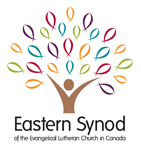Voting Information
All information here is pulled from the Elections Ontario website. For any information not included here, please visit https://www.elections.on.ca/en.html
Find below the different platforms and policy commitments of Ontario’s four major political parties.
Ontario NDP
https://www.ontariondp.ca/commitments
Progressive Conservative Party
https://ontariopc.ca/only-doug-ford-and-the-ontario-pc-party-will-get-it-done/
Ontario Liberal Party
https://ontarioliberal.ca/policy-announcements/
Green Party of Ontario
https://gpo.ca/issues/ontario-platform/?gad_source=1&gclid=CjwKCAiAh6y9BhBREiwApBLHC3tZgZE01iFhGQRn_dOY9rG-pwaZxzfy0iBZozqJrAAWETRtPsmGexoChQ4QAvD_BwE
How can I vote?
There are three different ways in which you can vote.
The most common way to vote is to go to your electoral district’s voting location on election day (Thursday, February 25th) with your voter information card and a piece of ID showing your name. You can vote from 9am until 9pm on election day.
If you are unable to vote in person on election day, you can also vote early in person. You must go to your local election office with the necessary ID any time before 6pm on February 26th for your early vote to be valid.
Additionally, if you will not be in the province/country, or are otherwise unable to vote in person, you can apply to vote by mail. To apply, click the link here. It is important to note that should your application be reviewed and approved, you will be unable to vote by other means. Mail-in ballots must be completed by 6pm on February 27th to be considered valid.
Voting for the Unhoused

Homelessness has massively increased in the province of Ontario. As of 2024, it was reported that over 80,000 people across the province were experiencing some form of homelessness.
In the context of the upcoming election, there are specific challenges and difficulties that are unique to voting as someone experiencing homelessness.To ensure that the voices of the marginalized are heard and every citizen is able to engage in their civic duty, we ask that you take the time to read the guide Voting When You’re Unhoused in the post above, and to share it with as many people as you can. If you know someone experiencing homelessness, are aware of organizations in your community that help the homeless, or can think of anyone who would benefit from this information, please consider sending them this guide.
“Since there will never cease to be some in need on the earth, I therefore command you, ‘Open your hand to the poor and needy neighbor in your land'” (Deuteronomy 15:11).
Where do I vote?
If you are voting in person, your voting location will be printed on your voter information card along with your electoral district. Voting location information is to be released after February 14th. If you do not receive your voter information card in the mail, go to the Voter Information Service page to search by electoral district. Alternatively, you can search by your postal code on the homepage of Elections Ontario.
What do I need to vote?
If you are on the Register, you will receive a voter information card (VIC) in the mail about when and where to vote. You must bring your VIC and one piece of [valid] ID showing your name to receive a ballot when you go to vote.
You can still vote if you do not receive a VIC, but your name may not be on the Register. You must bring one piece of [valid] ID showing both your name and home address to register and receive a ballot.
Find a list of acceptable pieces of ID here: https://www.elections.on.ca/en/voting-in-ontario/id-to-vote-in-provincial-elections.html#accordionIDtovote
FAQ
How can I find my local election office location?
Use Voter Information Service to find your local election office and voting location information.
You can find this information by:
- entering a postal code
- selecting ‘Search by electoral district’ to choose an electoral district from a drop-down menu
- searching from a list of First Nation reserves
When can I see my voting locations?
Voting locations will become available on February 14.
How can I find information about an electoral district?
To find information about an electoral district, you can:
- enter a postal code
- select ‘Search by electoral district’ to choose an electoral district from a drop-down menu
- search from a list of First Nation Reserves
- search by a lot and concession address
Is the Voter Information Service accessible?
The Voter Information Service has been designed to comply with the Accessibility for Ontarians with Disabilities Act (AODA) WCAG 2.0 Level AA guidelines and has been tested to function with screen readers.
Can I use a screen reader with the Voter Information Service?
Yes, the Voter Information Service has been tested to function with screen readers.
How do I contact Elections Ontario about the Voter Information Service?
You can find our contact information on our Contact Us page.
What’s at Stake?
Sections 92 and 93 of the Constitution Act 1867 outline the powers and responsibilities exclusively granted to the provinces of Canada. There are 15 identified subjects in which the provincial governments have jurisdiction, with key sections summarized below:
Finance
The provinces of Canada have the power to tax directly within the province with the goal of raising revenue for provincial purposes [s.92(1)], as well as the borrowing of money on the sole credit of the province [s.92(2)]. What this means is that the province is directly responsible for things like:
- Provincial Income Tax
- Provincial Sales Tax
- Public spending within the province
- The public debt of the Province of Ontario
This list is certainly not exhaustive, rather it gives a quick overview of what major financial factors are at play in the upcoming election.
Education
Section 93 states that: “In and for each Province the Legislature may exclusively make Laws in relation to Education, subject and according to [certain] Provisions.” Education, then, is solely a provincial responsibility. This means that all public and private elementary schools, middle and secondary schools, as well as post secondary schools are subject to regulation by the Government of Ontario. This responsibility, however, is largely downloaded from the province to the municipalities, which is why we have regional school boards. These school boards largely manage the actual programming and day to day affairs of Ontario’s schools. That being said, the province plays a role in:
- Establishing the school curriculum
- Setting requirements for graduation
- Setting Guidelines for school boards
- Approving textbooks for school use
- Transferring funds for the operations of schools
Healthcare
Subsection 7 grants the provinces the power to establish, maintain, and manage: hospitals, asylums, and charitable institutions. While the federal government does support provincial healthcare systems with funding, over ¾ of healthcare spending in this province is managed by the Government of Ontario. Additionally, the organization, regulation, and employment standards for the Ontario healthcare system are ultimately managed by the province. Medical services are billed to and paid for by the Ontario Health Insurance Plan (OHIP). This includes most public and private healthcare facilities. So when you step inside a hospital, make an appointment with your family doctor, need to find a psychiatrist, or are recommended to a specialist, you are partaking in the Provincial healthcare system.
Cities
Cities are rarely mentioned in the Constitution Act 1867 and are not constitutionally delegated any powers. Instead, s.92 lists “Municipal Institutions in the Province” as being the jurisdiction of provincial governments. This means that the Government of Ontario reserves the right to formally recognize (or not to recognize) municipalities, provide them with funding for services, affect their structure of governance, place them within regional governments, strike down their bylaws, and introduce legislation specifically targeting certain municipalities. Examples include:
- The creation of the GTA in 1998 by the Mike Harris Government
- The Restructuring of Toronto City Council in 2018 by the Doug Ford Government
- Bill 212 requiring municipalities to seek approval from the provincial Minister of Transportation before constructing bike lanes; the Minister is also tasked with removing certain bike lanes in the city of Toronto specifically
Businesses
The provincial government has the authority to require licences in order to the raising of revenue for provincial, local, or municipal purposes. Additionally, the province has the ability to legislate in relation to the incorporation of companies with provincial objects, like Metrolinx or the LCBO. This means that much of the regulation surrounding how one can create a company, and how that company must operate is subject to municipal, and by extension, provincial regulations. There are certainly areas where the federal government has the ability to regulate corporations, but as a rule of thumb, it is normally more accurate to view this as a provincial affair.
Justice
The creation of criminal law is the exclusive jurisdiction of the federal government. That being said, most violations of the law are not criminal offences, but are regulatory offences, or more generally offences of a less serious nature. Many of these are laws designed by the provinces themselves. In terms of justice, as outlined in s.92, the province of Ontario is responsible for:
- The establishment, maintenance, and management of prisons in and for the Province
- Property and civil rights in the Province
- The administration of justice, including the constitution, maintenance, and organization of provincial courts
- The imposition of punishment by fine, penalty, or imprisonment for enforcing any law of the province
So whereas the Government of Ontario cannot increase the penalties for crimes such as murder or robbery, they can impose harsher fines on drunk driving, as an example. The number of prisons, the staffing of courts, funding for courts and prisons, the hiring of public defenders/crown attorneys, and the approach the courts take to regulatory offences are examples of the responsibilities of the province.
